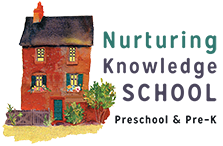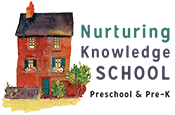Nurturing Knowledge School operates year round Reggio Emilia-inspired programs, from July to June. Our approach shares the philosophy of early learning that emerged from the pioneering collective work of educators in Reggio Emilia, Italy.
Inspired by this community-oriented approach, our curriculum is child-centered and inquiry-based. Interactions between teachers and students are responsive to the developing interests of each child, which defines our emergent curriculum. As a learning tool for teachers, students, and parents alike, daily documentation of classroom activities, projects and observations is ongoing throughout the year.


